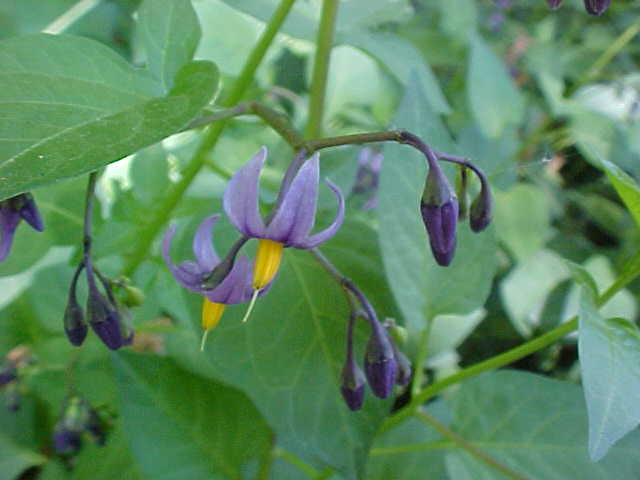As it’s that time of the year when we’re all working away in our gardens, I thought I’d write a post about some of the UK’s most poisonous plants.
Over five thousand people a year become ill through contact with plants, and the National Poisons Unit estimates that over ten people die, and hundreds are hospitalised anually.
So….here are a few of Britains most deadly plants that most of us have growing in our gardens…
Deadly nightshade, or belladonna is one of the most poisonous plants in the world. A single leaf, if eaten would kill a healthy adult! I have belladonna growing in my herb garden, and I simply cannot get rid of it! Last year I picked a load of herbs for a soup and discovered I had somehow managed to pick a bit of belladonna. Close shave!!! Several years ago a biochemistry lecturer was jailed for attempted murder as he spiked his wife’s G+T with atropene, a dirivative of belladonna. People who have used belladonna as a recreational drug often experience a sensation of flying along with hallucinations.
Yew, sweet peas, and rubarb leaves are all highly poisonous…I’ve heard it said that apple pips are toxic but I’ve eaten plenty and not suffered any strange side effects.
Buttercups cause blistering of the mouth and intestional tract if eaten and skin inflamation if handled.
The hydrangea flower is often mistaken for an edible flower, if eaten it causes cronic stomach cramps, vomiting and fever. It has even put people in a coma. Fortunately, there is an anti-dote.
In 2009, a group of primary school children became seriosly ill after adding a daffodil bulb, which is highly poisonous, to a soup they were making in a cookery class.
Wisteria flowers are highly toxic and cause nausea, cramps and diarrhorea if eaten.
Lily of the valley, or Our lady’s tears is also a highly toxic plant. The berries, if eaten, can kill, causing heart failure. It’s best to always wash your hands after handling this plant!
The foxglove has long been used in heart medication, however, every part of this plant is deadly, and if eaten can cause hallucinations, convulsions and death! Beware of ingesting the tiny seeds when handling!!!
Rhododendrons are also leathal. Honey made from it’s flowers can have hallucinogenic effects, and it’s known as “mad honey”. In the past it has been used as a weapon against Roman soldiers in Britain.
One to really watch out for is the Autumn crocus. If eaten it’s poison, a toxin similar to arsenic, can kill, and there is no anti-dote. Currently trials are underway to use this plant in cancer treatments.
I was going to round of with a few edible flowers that are delicious, but thought better of it…I’d hate to kill any of you…..btw.. ..apparently cooking and garnishing with edible flowers is back in vogue!


Just what I needed to know for a novel I’m working. I confused it with foxglove. Your article gave me some ideas. Thanks
I tried belladonna once many years back, I had a mis-spent youth, I was sick for weeks but did enjoy the sensation of flying. Wouldn’t reccomend it though.
Oh wow…..never heard of anyone trying the stuff! I’ll take your word for it then!xxx